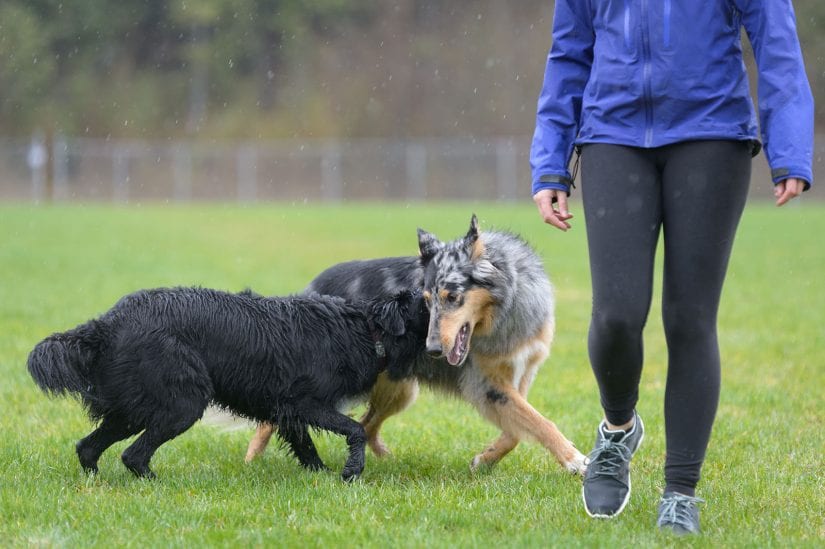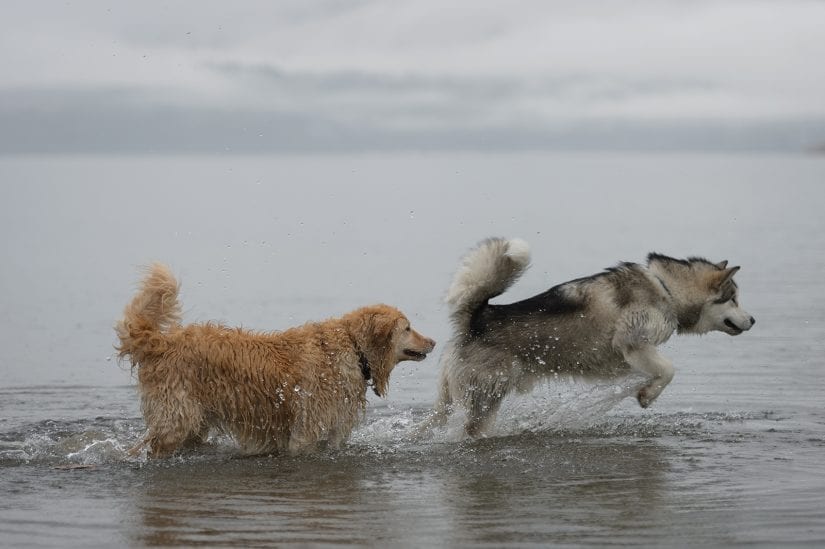Question: My dog often expresses mounting behaviour. Why does he do this and is it possible to stop this kind of behaviour?
Dog guardians are often embarrassed when their dog mounts another dog, particularly in public places. But don’t be too distressed, dog mounting is a normal behaviour that lots of dogs do. It doesn’t matter if the dog is a male or female, neutered or not.
Aside from the obvious role mounting plays in reproduction, dogs don’t just mount other dogs. They’ll mount pillows, basketballs, food dishes, people’s legs and even other species – cats for example. But why do they do it?

Ethologists, those who study animal behaviour, suggest mounting behaviour is motivated by your dog’s emotional state. Highly excited dogs may only hump at the off-leash park or when playing with other dogs they know really well; other dogs will mount a pillow or other object when stressed or anxious. A dog may also hump when emotionally conflicted. Sparky may be excited when a visitor comes into the home but also stressed by the change of pattern in the household. Conflicted emotionally, Sparky decides to hump his dog bed, likely as a kind of coping mechanism. This is what behaviourists call displacement behaviour: a by-product behaviour to help cope with internal emotional conflicts.
You might hear people suggest that the humping dog is trying to exert dominance over another dog. Yet ethologists suggest this is likely not the case. Whether with dogs, or in wolf and coyote populations, situations of mounting, clasping and humping seem to be more about visual signaling within the group than about establishing rank in a hierarchy. In fact, the whole notion of there being some sort of hierarchy in the dog world is outdated and inaccurate.

Finally, the question of what should you do if your dog is a “humper”? Recognizing the context of the mounting situation should dictate your intervention. High excitable mounting in the dog park requires redirecting that energy and attention-seeking behaviour into other types of play, such as fetching or chasing games. Sometimes dogs who are bored hump, so invest in some stimulating playtime. If mounting is because of anxiety, efforts should focus on building the dog’s confidence and comfort level. If it is a compulsive, non-stop behaviour, just like obsessive tail chasing or shadow jumping, you will want to consult both your veterinarian and a dog behaviourist to create a long-term solution.
For more tips on dog care and behaviour, check out our dog pet care section. Need an animal trainer? Learn about AnimalKind dog training.
Get updates from the BC SPCA
Want to receive more pet tips like this, right in your inbox? Use the form below to subscribe for updates.
